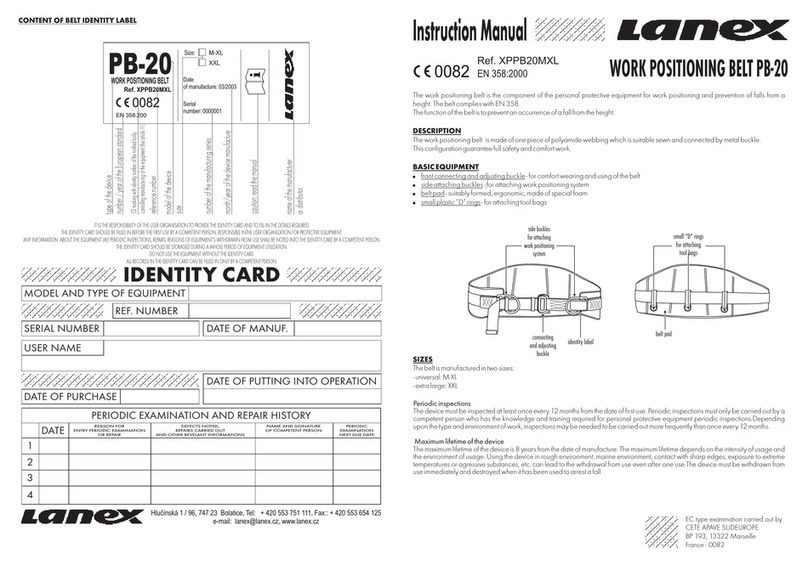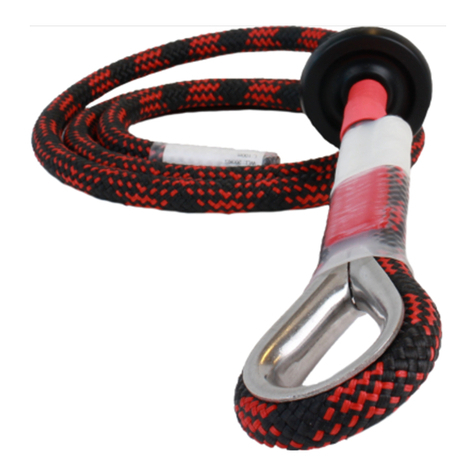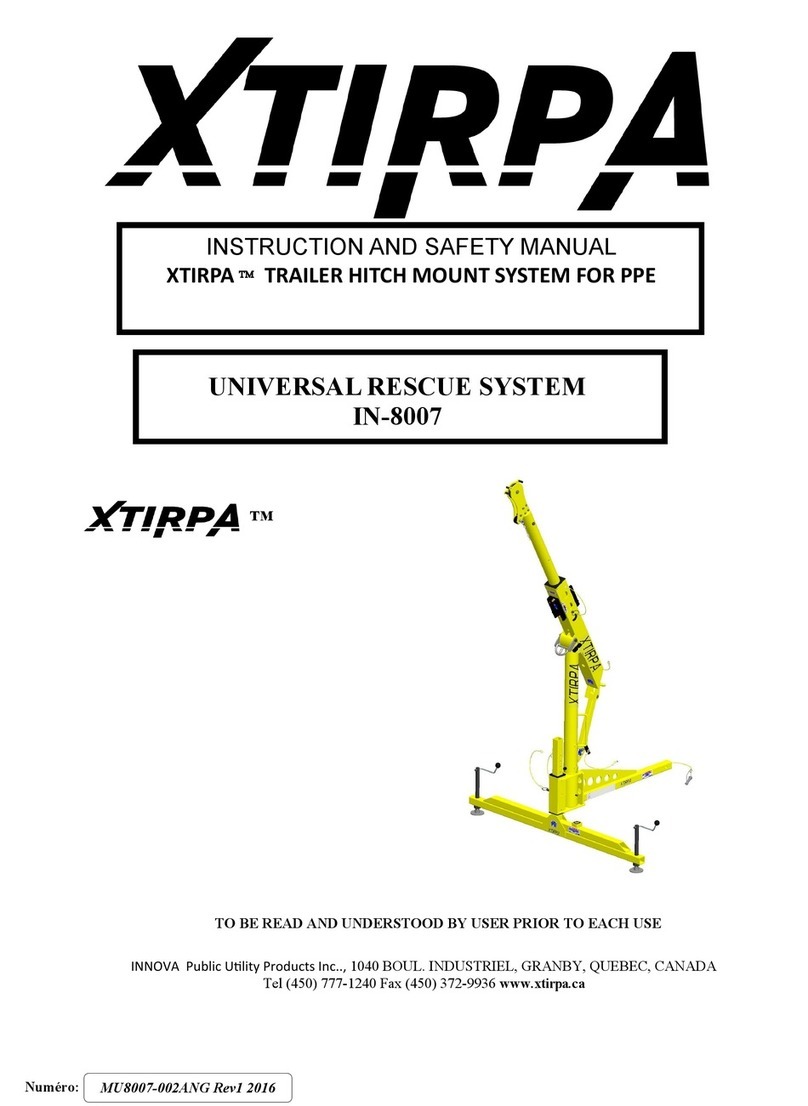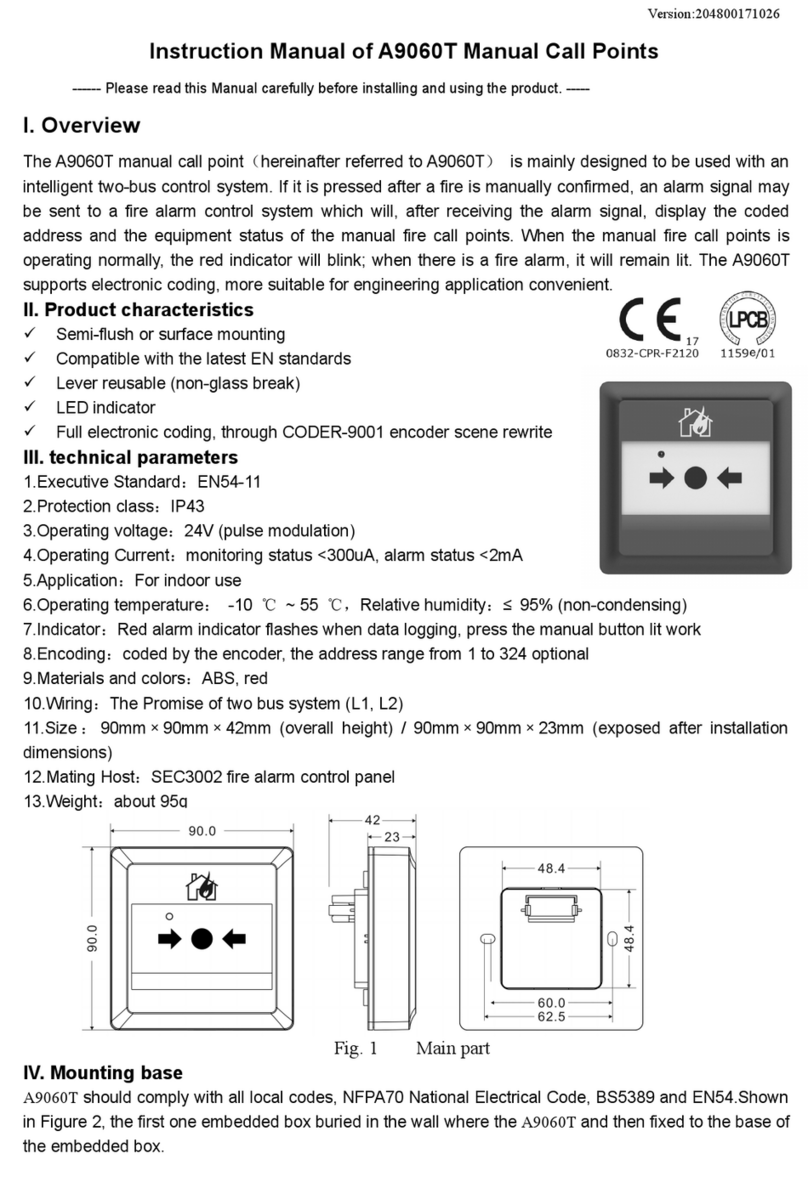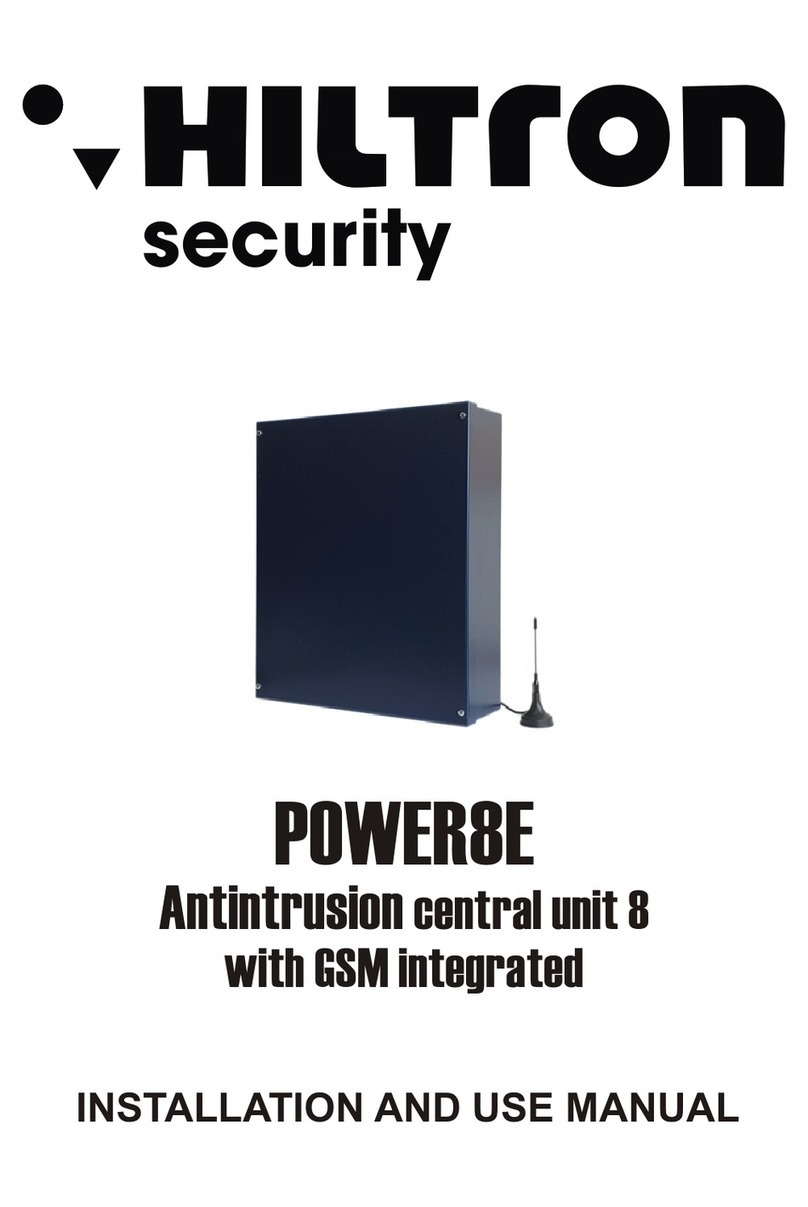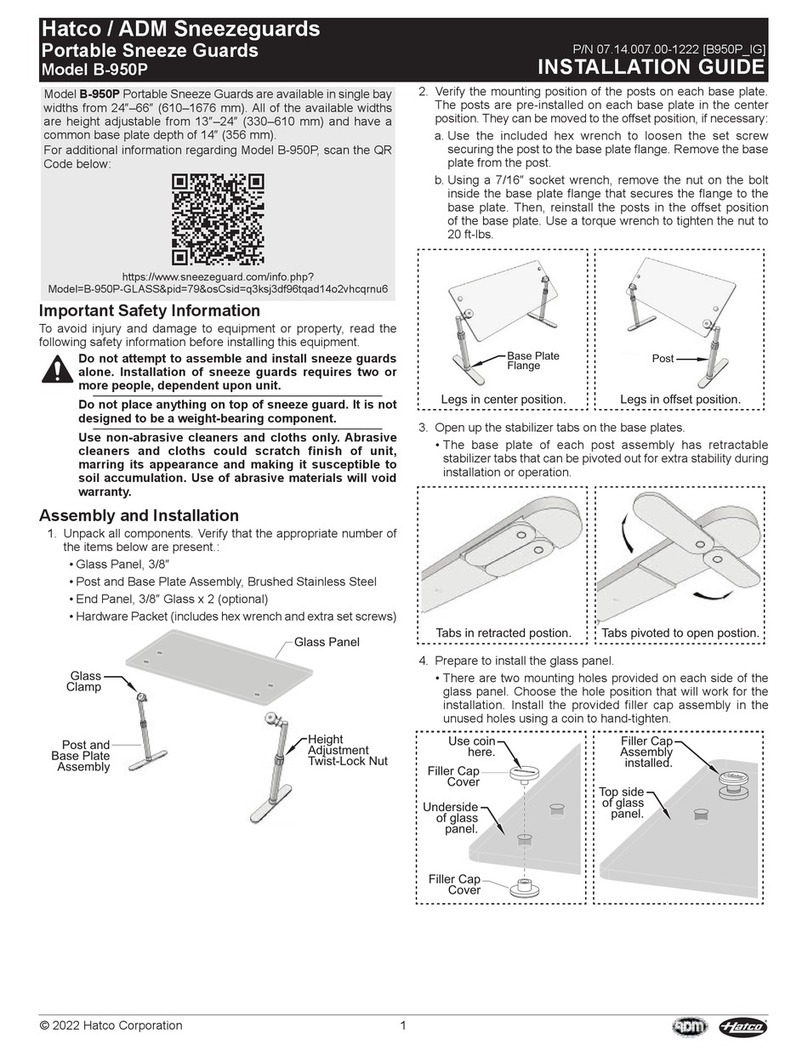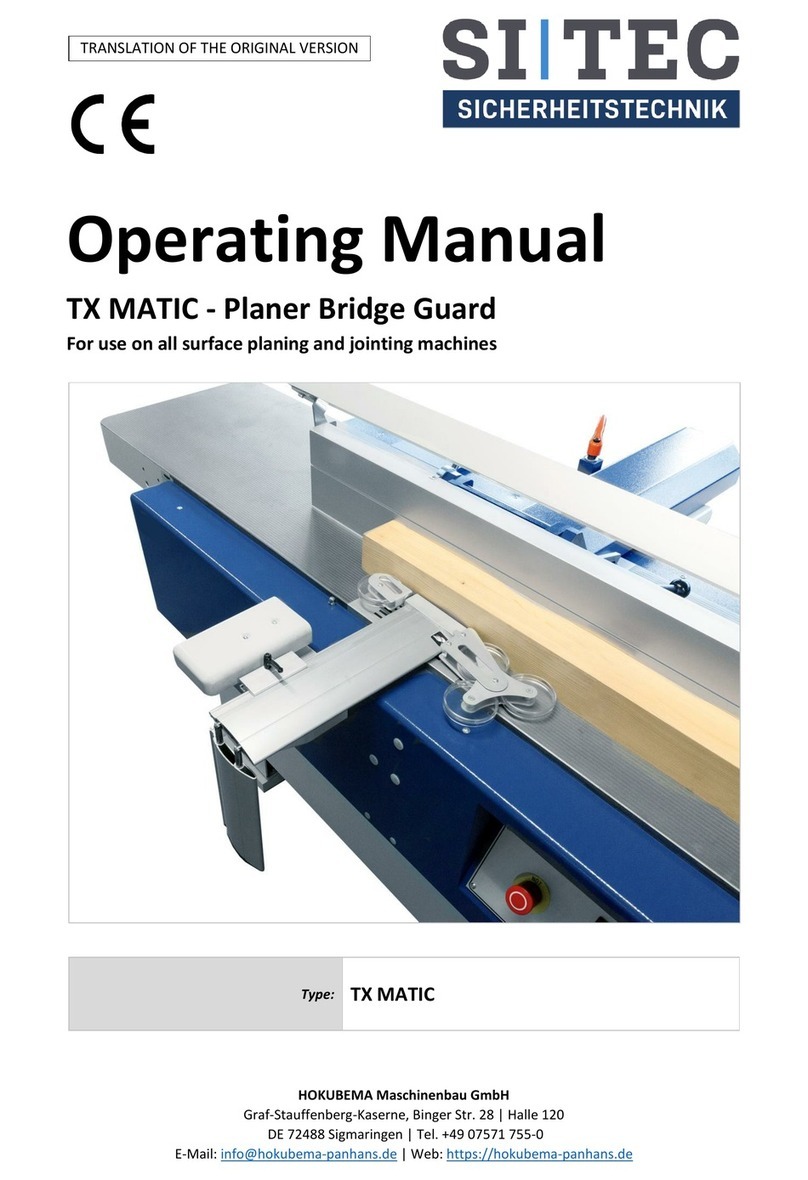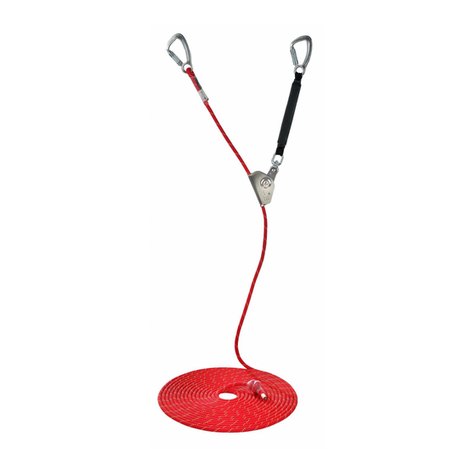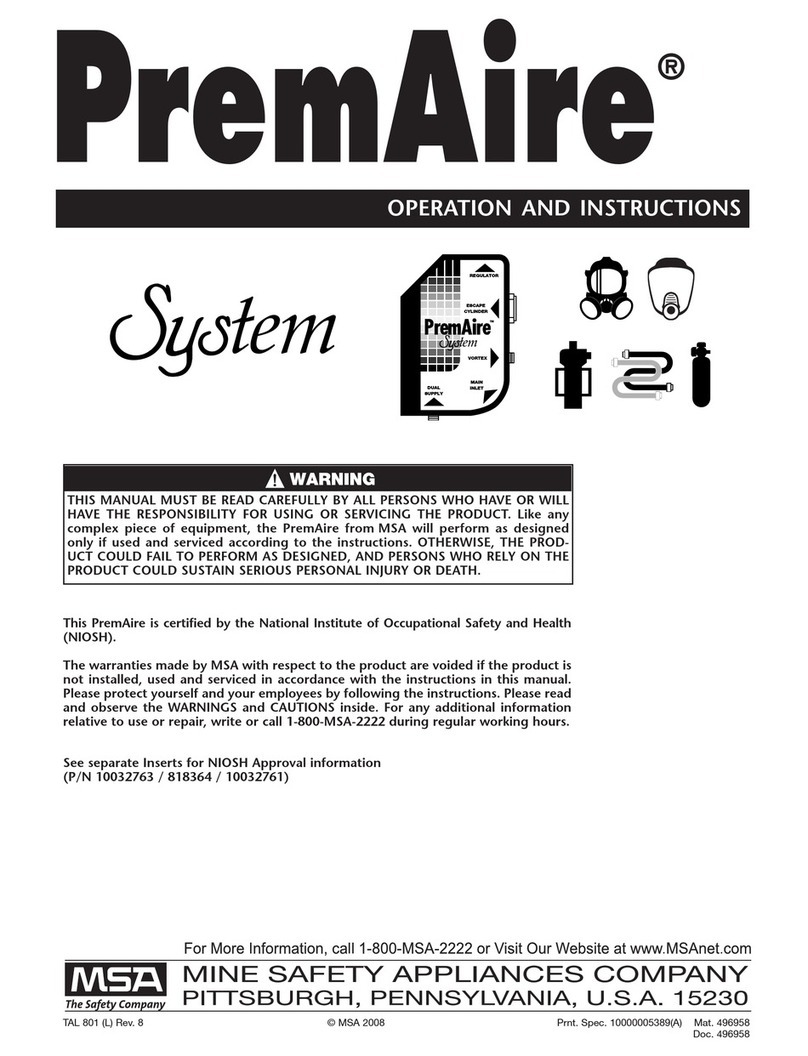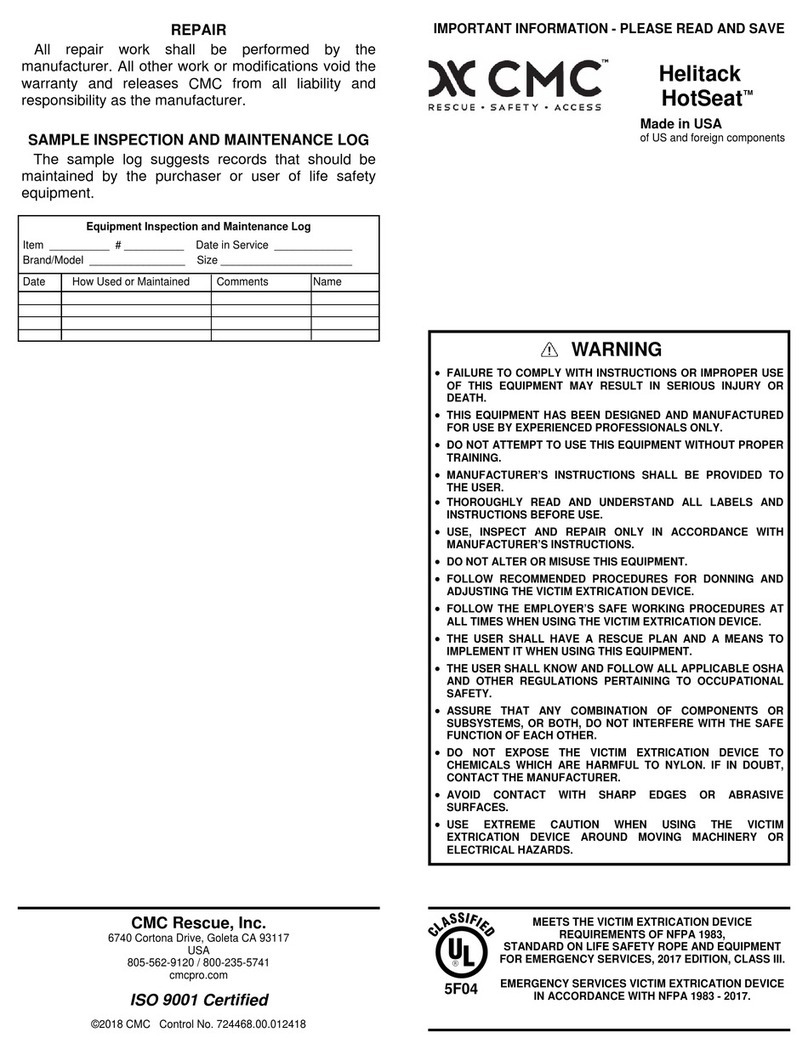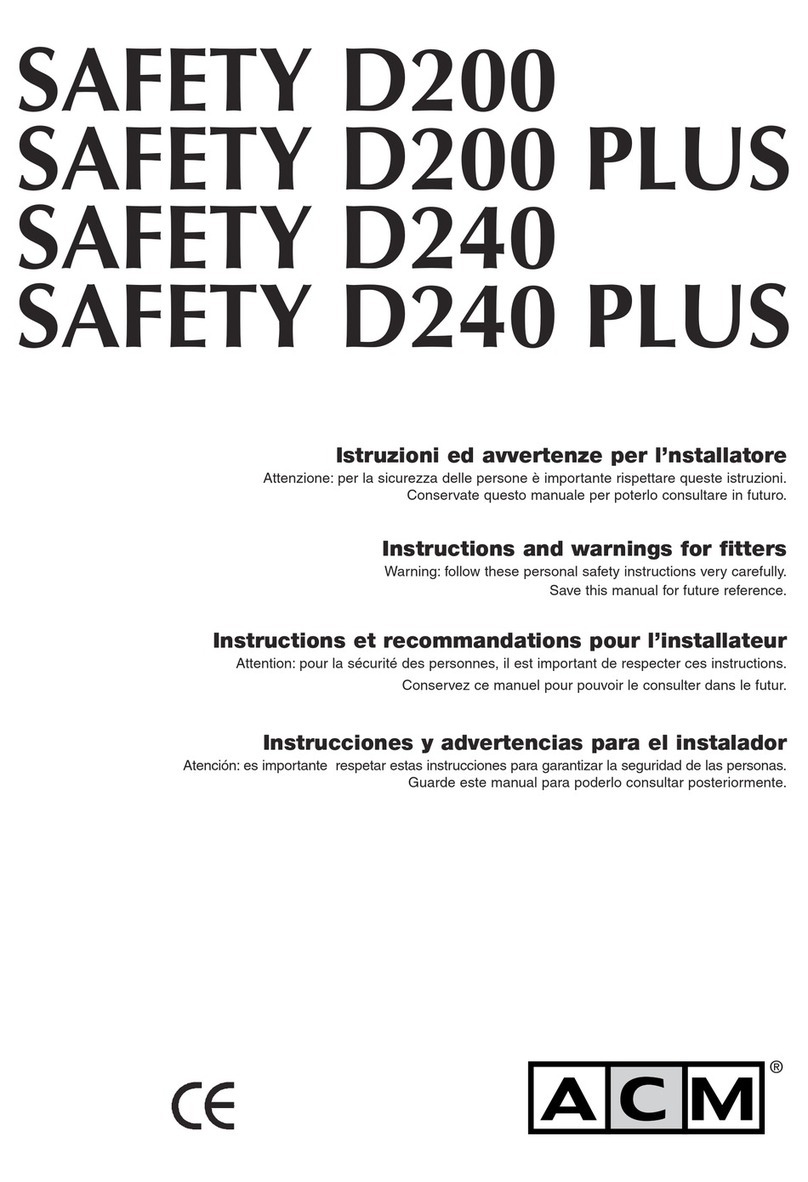
38
36
35
37
FR
FR
7. Retirer l'air du gilet hit-air (photo 7).
Si du gaz reste à l'intérieur des coussins
d'air, il ne peut pas être remonté.
S'il y a des dommages sur l'aiguille,
consulter un revendeur agréé. L'airbag
ne fonctionne ni ne se gonfle si l'aiguille
est endommagée ou déformée.
8. Replier tous les coussins d'air et fermer
tous les boutons et velcro (photo 8).
Photo 7
Après avoir dévissé la
cartouche usagée,
vérifier que l'aiguille à
l'intérieur du boîtier
n'est pas endommagée.
①
②
③
④
①
②
③
④Attacher le velcro
sur la hanche.
Attacher le velcro
sur le cou.
Attacher le
velcro sur le
dos.
Fermer les
boutons sur le cou.
Photo 8
Photo 9
10. Retirer le connecteur par le trou du
couvercle du boîtier.
Fermer la fermeture éclair autour du
boîtier (photo 10).
Fin
Visser une cartouche neuve
en respectant le sens
indiqué sur l'autocollant de
la cartouche.
9. Visser une nouvelle cartouche de CO2
(photo 9). Vérifier que le joint de la
cartouche n'est pas perforé et qu'il est neuf.
Passer le
connecteur
par le trou
prévu à cet
effet.
Photo 10
PRECAUCIÓN
PRÉCAUTION
PRÉCAUTION
1. Le système d'airbag hit-air ne ne doit en aucun cas être lavé à la main,
ni en machine ou au nettoyage à sec.
2. Il ne doit pas être plongé dans l'eau.
3. Il doit être séché à l'ombre s'il est mouillé. Comment enlever les taches.
・Essuyer avec une serviette humide.
・Accrocher le hit-air (sans détacher la cartouche de CO2) et vaporiser de l'eau avec un tuyau ou une douche
en essayant de ne pas mouiller la partie du boîtier.
Lavage et stockage
Lavage
Ne pas laver ! Airbag
Ne pas utiliser de lessives ni d’assouplissants. Ils peuvent détériorer ou endommager le tube en polyuréthane.
Comment stocker
Conserver le gilet hit-air suspendu à un cintre. Ne pas plier ni poser quelque chose dessus.
Éviter les hautes températures et l’humidité élevée.
Pour préserver efficacement et durablement votre gilet, évitez les conditions suivantes :
1. Haute température
(sous la lumière directe du soleil, dans une voiture fermée, près d’un radiateur ou de flammes nues, etc.)
2. Exposition à la pluie ou à une humidité extrême, y compris la vapeur et une humidité élevée
3. Stockage d'objets sur le système d'airbag hit-air
4. Laisser le gilet hit-air à la portée des enfants, des animaux domestiques ou d'autres animaux
5. Plié ou enroulé (il est préférable de placer le gilet sur un cintre)
8
7
9
11
10
Si un des problèmes listés ci-dessous est détecté sur votre produit hit-air, consulter un revendeur agréé pour en
acquérir un nouveau ou le réparer/remplacer.
1. Une partie du tissu s'effiloche ou se déchire et/ou le tube interne (film polyuréthane blanc) est exposé.
2. Le boîtier et/ou la cartouche présente des signes de détérioration ou des traces de rouille.
3. La sangle de connexion et/ou la boucle présente des signes de détérioration.
4. Un changement important de couleur et/ou une détérioration du matériau est constaté.
Contrôle de maintenance
Ce protecteur comprend plusieurs matériaux, dont des tissus, des pièces métalliques, des plastiques et une
cartouche de CO2. Ils ne peuvent pas être jetés en tant que déchets ordinaires. Contacter un revendeur agréé
pour un traitement correct du produit. Une mise au rebut incorrecte du produit peut entraîner des situations
dangereuses ou une pollution de l'environnement.
Même si aucun dommage n'est visible, le coussin d'air peut être endommagé. Par conséquent, apporter votre
produit hit-air chez un revendeur agréé pour un contrôle de maintenance afin de tester les coussins d'air contre
d’éventuelles fuites et inspecter ses pièces pour s'assurer qu'il fonctionnera correctement en cas d'accident.
Chaque fois que le hit-air est gonflé, même s'il n’existe aucun dommage visible, nous vous recommandons de
confier votre produit hit-air à un revendeur agréé pour un contrôle de maintenance.
La cartouche de CO2 ne peut pas être jetée avant d'être percée. Si la cartouche n'est pas utilisée,
activer le système hit-air et perforer la cartouche de CO2 pour libérer le CO2 de la cartouche.
Remplacement et mise au rebut
Service après-vente
L'organisme notifié qui a certifié ce produit est EU NOTIFIED BODY N ° 0197
TÜV Rheinland LGA Products GmbH, Tillystr. 2 90431 Nurnberg, Allemagne
Déclaration de conformité https://www.hit-air.com/en/motorcycle/system/trial_data/ce-2020.html
Certificat et déclaration de conformité
Consulter la « Politique de garantie hit-air » pour plus d'informations sur le service après-vente et les
garanties.
Politique de garantie hit-air
Remplacement
Mise au rebut
Veuillez vous assurer de lire le manuel d’utilisation (version anglaise) pour plus d'informations avant l’utilisation.
Si vous avez des questions, veuillez contacter notre revendeur ou distributeur agréé dans votre région.
PRÉCAUTION
PRÉCAUTION
DE
1
Sicherheitshinweise
1. Die Hit-Air-Airbagweste ist für die Sicherheit des Fahrers beim Motorradfahren bzw. des Reiters beim Reiten
konzipiert. Sie darf nicht für andere Zwecke verwendet werden. Bitte tragen Sie keine andere Jacke, Weste
oder ein anderes Kleidungsstück über dieser Schutzkleidung.
2. Die Hit-Air-Airbagweste muss - in der richtigen Größe - als Oberbekleidung auf dem Oberkörper getragen werden.
Diese Schutzkleidung funktioniert nur ordnungsgemäß, wenn alle Reißverschlüsse und Schnallen richtig geschlossen
wurden. Überprüfen Sie daher vor jedem Gebrauch, dass alle Reißverschlüsse und Schnallen richtig geschlossen sind.
3. Verwenden Sie beim Austausch der Gaskartusche nur eine Hit-Air-CO2-Kartusche derselben Größe und desselben
Inhalts und vergewissern Sie sich, dass die Kartusche keine Löcher oder Risse in der Dichtung aufweist.
4. Zerlegen Sie die Hit-Air-Airbagweste nicht in Einzelteile. Jegliche Verschmutzung, Veränderung oder
missbräuchliche Verwendung dieser Schutzkleidung führt zu einer gefährlichen Reduzierung ihrer Schutzleistung.
Entfernen Sie niemals die obere Abdeckung desAuslösemechanismus ( KeyBox ). Sollte die obere Abdeckung entfernt
worden sein, so kann der Auslösemechanismus die Weste nicht aktivieren Und der Nutzer könnte verletzt werden.
5. Entfernen Sie scharfe oder spitze Gegenstände, beispielsweise Nadeln oder Stifte, von der Hit-Air-Airbagweste und
auch von Ihrer Kleidung darunter, bevor Sie die Schutzkleidung anlegen. Solche Gegenstände können die
Luftkissen vor oder zum Zeitpunkt der Aktivierung beschädigen und die Funktion der Hit-Air-Airbagweste stören.
6. Halten Sie offene Flammen und Zigaretten von der Hit-Air-Airbagweste fern, da dadurch verursachte Brandlöcher
oder Risse ihre Funktion beeinträchtigen können. Die Hit-Air-Airbagweste nur bei Temperaturen unter 40 ℃(104 ℉)
aufbewahren und einsetzen, da die Hit-Air-CO2-Kartusche bei höheren Temperaturen explodieren kann.
7. Um eine Beschädigung des Airbags zu vermeiden, bitte nicht mit Nadeln in die Hit-Air-Airbagweste hineinstechen
und auch keine Embleme aufnähen oder mit einem Bügeleisen anbringen. Wenden Sie sich an einen autorisierten
Händler, um zu erfahren, wo ein Emblem aufgenäht werden kann.
8. Bewahren Sie die Hit-Air-Airbagweste über einen Kleiderbügel gehängt auf. Falten Sie sie nicht und legen Sie nichts
darauf.Vermeiden Sie hohe Temperaturen und hohe Luftfeuchtigkeit.
9. Es kann nicht garantiert werden, dass diese Schutzkleidung die Sicherheit des Fahrers gewährleistet. Es besteht auch
kein Schutz für Bereiche, die vom Airbag nicht abgedeckt werden.
10.
Nachdem der Airbag sich entfaltet hat, bietet er Schutz durch eine Verringerung des Verletzungsrisikos, indem er den Aufprall
bei einem Sturz oder den Aufprall gegen einen Gegenstand abfedert. Diese Schutzkleidung bietet jedoch keinen Schutz gegen
Verdrehungen, Verbiegungen oder andere extreme Bewegungen. Weiterhin bietet diese Schutzkleidung dem Fahrer möglicherweise
nicht unter allen Umständen Schutz, beispielsweise während des ersten Aufpralls des Motorrads gegen das Hindernis oder bei einem
Sturz vom Motorrad ohne Trennung der Verbindung. Keine Schutzkleidung kann einen völligen Schutz in allen Situationen leisten.
11.Stellen Sie sicher, dass das „Spiralkabel“ fest am Motorrad befestigt ist.
Eine unsachgemäße Befestigung kann die Funktion der Hit-Air-Airbagweste stören.
12.Wenn Sie am „Spiralkabel“ oder an der „Kabelschlaufe“, die an dem „Kugelauslöser“ (key ball) angebracht sind, ein
Ausfransen, Rost oder Verschleiß feststellen, sind diese sofort zu ersetzen.
13.Waschen Sie die Hit-Air-Airbagweste (das Airbag-System) nicht.
14.Trennen Sie die Hit-Air-Airbagweste am „One-Touch-Verbinder“ (Stecker) vom „Spiralkabel“, bevor Sie vom
Motorrad absteigen. Ansonsten kann das System versehentlich ausgelöst werden.
15.Überprüfen Sie die Schutzkleidung und die dazugehörigen Teile vor jedem Gebrauch. Falls ein Teil beschädigt oder
verschlissen ist, tauschen Sie es bitte aus oder wenden Sie sich für eine Wartungskontrolle an einen autorisierten Händler.
Neben der oben genannten Überprüfung durch den Benutzer empfehlen wir eine regelmäßige Wartung durch einen autorisierten
Händler. Insbesondere wird empfohlen, jährlich eine Wartung durch einen autorisierten Händler durchführen zu lassen.
16.Wenden Sie sich nach einer unfallbedingten Aktivierung an einen autorisierten Händler, um eine Wartungskontrolle
durchführen zu lassen, selbst wenn oberflächlich keine Beschädigungen vorliegen.
17.Um sicherzustellen, dass die Hit-Air-Airbagweste ordnungsgemäß funktioniert, bringen Sie sie zu einem autorisierten
Händler, um sie - je nach Nutzungshäufigkeit - mindestens einmal jährlich kontrollieren zu lassen.
18. Aktivieren Sie die Weste niemals, wenn keine CO2 Kartusche eingeschraubt ist. Der Auslösemechanismus
könnte beschädigt, oder eine Person verletzt werden. Sollte die Weste ohne installierte Kartusche aktiviert
worden sein, so wenden Sie sich bitte direkt an uns oder einen autorisierten Fachhändler.
Lesen Sie diese Gebrauchsanleitung unbedingt sorgfältig durch, bevor Sie die Hit-Air-Airbagweste (das Airbag-System) verwenden.
Nur so können Sie sie ordnungsgemäß und sicher verwenden. Bewahren Sie die Gebrauchsanleitung bitte an einem Ort auf, den Sie jederzeit
erreichen können (z.B. im Motorrad).
In dieser Gebrauchsanleitung werden folgende Symbole verwendet:
Dieses Zeichen zeigt an, dass die Nichtbeachtung dieser
„WARNUNG“ zum Tod oder zu schweren Verletzungen
beim Benutzer dieses Produkts führen kann.
Dieses Zeichen zeigt an, dass die Nichtbeachtung
dieses „VORSICHT“-Hinweises zu Verletzungen
oder zu Sachschäden führen kann.
VORSICHT
VORSICHT
VORSICHT
VORSICHT
VORSICHT
VORSICHT
VORSICHT
VORSICHT
VORSICHT
VORSICHT
VORSICHT
VORSICHT
VORSICHT
WARNUNG
WARNUNG
WARNUNG
WARNUNG
WARNUNG
WARNUNG
WARNUNG
2
Kugel-
auslöser
Aktivierungs
-Abstand
Die Hit-Air-Airbagweste (ein den Aufprall abfederndes Schutzsystem) wird als Oberbekleidung
während des Motorradfahrens getragen.
Die Hit-Air-Airbagweste wird, wenn die Entfernung zwischen Fahrer und Motorrad den
„Aktivierungsabstand“ (*1) überschreitet - beispielsweise bei einem Sturz des Fahrers -
unverzüglich aktiviert und entfaltet. Das System wird in dem Moment aktiviert, in dem der
Kugelauslöser aus der Kugelhalterung (key box) herausgerissen wird.
Dadurch wird das CO2-Gas der Kartusche in die Luftkissen abgeben und die Luftkissen entfalten
sich umgehend.
Die gefüllten Luftkissen sind so gestaltet, dass sie zwischen dem Fahrer und denjenigen
Objekten liegen, gegen die der Fahrer nach einem Sturz vom Motorrad prallen könnte.
Die Hit-Air wirkt dadurch wie ein Puffer, der die Energie des Aufpralls absorbiert und so das
Verletzungsrisiko für den Fahrer, der es trägt, verringert.
Dies impliziert oder garantiert jedoch nicht die Sicherheit des Fahrers.
Es bedarf einer erheblichen Kraft, um den Kugelauslöser herauszuziehen und er lässt sich auch
aufgrund der elastischen Beschaffenheit des Spiralkabels nicht so einfach herausziehen.
Daher wird sich die Hit-Air unter normalen Fahrbedingungen nicht entfalten, selbst dann nicht,
wenn der Fahrer auf den Stützen steht.
(*1) Der „Aktivierungsabstand“ ist definiert als die Länge des Spiralkabels im gänzlich ausgestreckten
Zustand vom Motorrad bis zur Kugelhalterung an der Hit-Air-Airbagweste des Fahrers, wobei keine
Hindernisse dazwischen liegen dürfen.
Einstecken
„Klick!“
Klick-
Geräusch
DE
DE
Allgemeine Informationen
Spiralkabel
One-Touch-Verbinder
(zwischen den Oberschenkeln platzieren)
Verbinden Sie, wenn Sie auf das Motorrad
steigen, die Hit-Air-Airbagweste mit dem
„One-touch-Verbinder“ (Stecker).
Pour éliminer tout gaz résiduel du coussin
d'air, étaler le gilet face vers le bas sur une
surface plane et lisse. Exercer une pression
sur chacun des coussins afin d’évacuer
complètement le gaz.
Ne pas plier ni rouler le gilet hit-air pour
éviter tout dommage à l'intérieur. Cela
peut prendre du temps pour libérer tout le
gaz dans les coussins d'air, mais cela est
nécessaire car il ne peut pas être remonté
s'il reste du gaz à l'intérieur.
Si la cartouche n'est pas complètement et
fermement installée, le gilet hit-air
pourrait ne pas s’activer/se gonfler.
